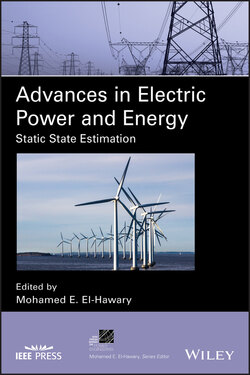Читать книгу Advances in Electric Power and Energy - Группа авторов - Страница 62
2.5.5.2 LMS Mathematical Programming Formulation
ОглавлениеThe LMS mathematical programming formulation is
(2.39a)
subject to
(2.39b)
(2.39c)
(2.39d)
(2.39e)
(2.39f)
where parameter M is a sufficiently large constant and parameter ν identifies the median and can be computed as [26]
(2.40)
where n is the number of state variables and function int(x) denotes the integer part of x.
The rationale for formulation (2.39) can be graphically explained. Figure 2.6 depicts the set of measurement errors yi(x), which are sorted by value. The colored zone is delimited by the bounds [−TLMS, TLMS] and includes the smaller measurement errors up to the position ν.
Figure 2.6 Graphical representation of the LMS estimator.
The objective function (2.39a) minimizes the variable TLMS, i.e. the width of the colored zone. The vector constraints (2.39b) and (2.39e) enforce that the number of measurements contained in the zone [−TLMS, TLMS] is equal to the parameter ν. The measurement residual yν(x) is thus at one edge of the interval [−TLMS, TLMS].
In formulation (2.39), note that the minimization of the median of squared errors corresponds to the minimization of the median of absolute errors.
The proposed mathematical formulation requires the addition of the following optimization variables: (i) a binary variable vector b whose values identify those absolute errors ∣yi( x)∣, which are smaller than or equal to ∣yν( x)∣, and (ii) a variable TLMS whose value is equal to ∣yν(x)∣. Three sets of constraints must also be included. Observe that the symbol TLMS represents a variable to be optimized, not a predefined parameter.
